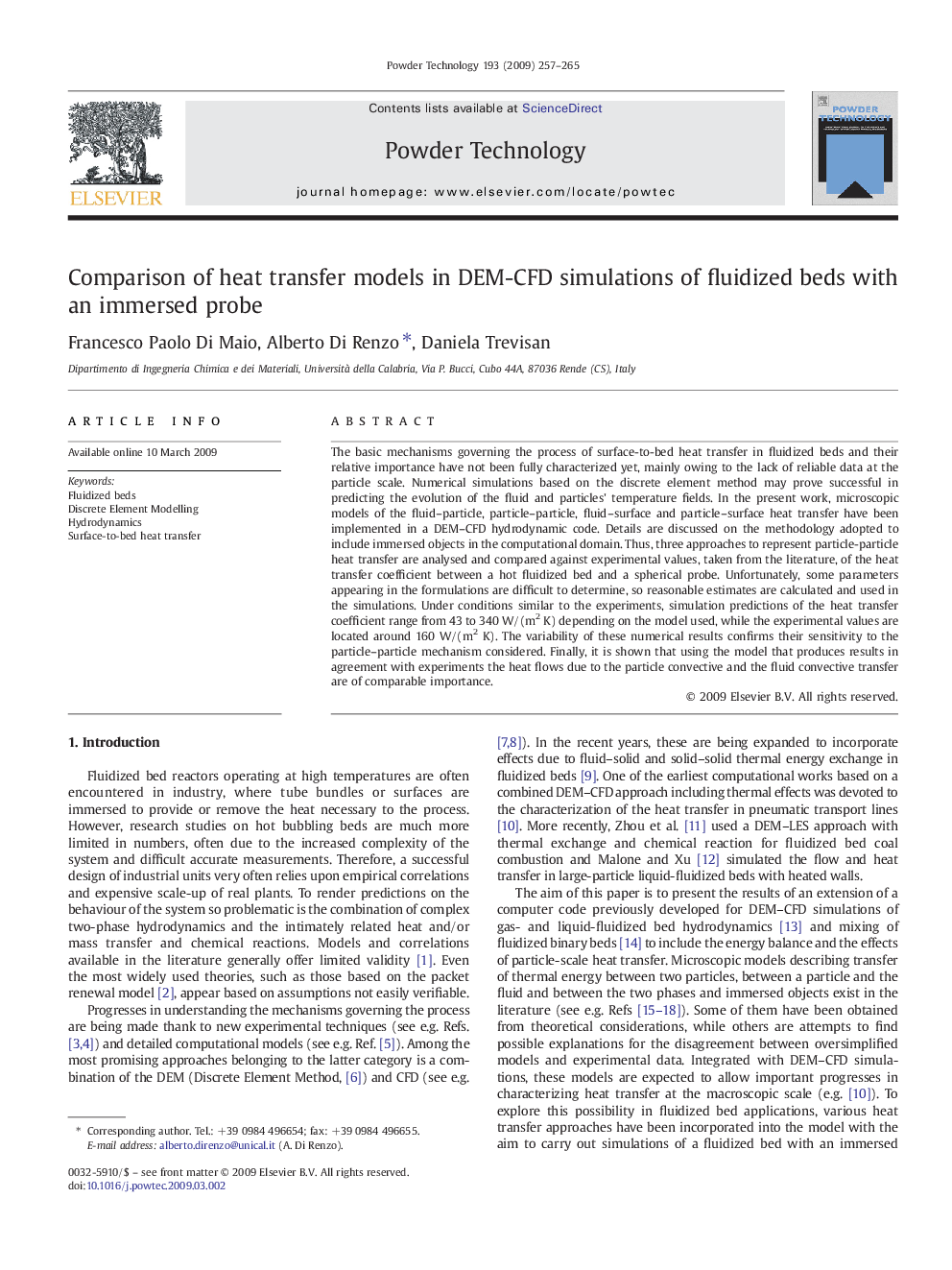| کد مقاله | کد نشریه | سال انتشار | مقاله انگلیسی | نسخه تمام متن |
|---|---|---|---|---|
| 237909 | 465731 | 2009 | 9 صفحه PDF | دانلود رایگان |

The basic mechanisms governing the process of surface-to-bed heat transfer in fluidized beds and their relative importance have not been fully characterized yet, mainly owing to the lack of reliable data at the particle scale. Numerical simulations based on the discrete element method may prove successful in predicting the evolution of the fluid and particles' temperature fields. In the present work, microscopic models of the fluid–particle, particle–particle, fluid–surface and particle–surface heat transfer have been implemented in a DEM–CFD hydrodynamic code. Details are discussed on the methodology adopted to include immersed objects in the computational domain. Thus, three approaches to represent particle-particle heat transfer are analysed and compared against experimental values, taken from the literature, of the heat transfer coefficient between a hot fluidized bed and a spherical probe. Unfortunately, some parameters appearing in the formulations are difficult to determine, so reasonable estimates are calculated and used in the simulations. Under conditions similar to the experiments, simulation predictions of the heat transfer coefficient range from 43 to 340 W/(m2 K) depending on the model used, while the experimental values are located around 160 W/(m2 K). The variability of these numerical results confirms their sensitivity to the particle–particle mechanism considered. Finally, it is shown that using the model that produces results in agreement with experiments the heat flows due to the particle convective and the fluid convective transfer are of comparable importance.
The basic mechanisms governing the process of surface-to-bed heat transfer in fluidized beds and their relative importance have not been fully characterized yet, mainly owing to the lack of reliable data at the particle scale. In the present work, microscopic models of the fluid–particle, particle–particle, fluid–surface and particle–surface heat transfer have been implemented in a DEM–CFD hydrodynamic code. Three approaches to represent particle–particle heat transfer are analysed and compared against experimental values, taken from the literature, of the heat transfer coefficient between a hot fluidized bed and a spherical probe. The computed flow and thermal fields allow a very detailed analysis to be carried out to understand the underlying phenomena at the particle scale. Under conditions similar to the experiments, simulation predictions demonstrate that the real phenomena can be reproduced with reasonable accuracy but also confirms their sensitivity to the particle–particle mechanism considered.Figure optionsDownload as PowerPoint slide
Journal: Powder Technology - Volume 193, Issue 3, 10 August 2009, Pages 257–265